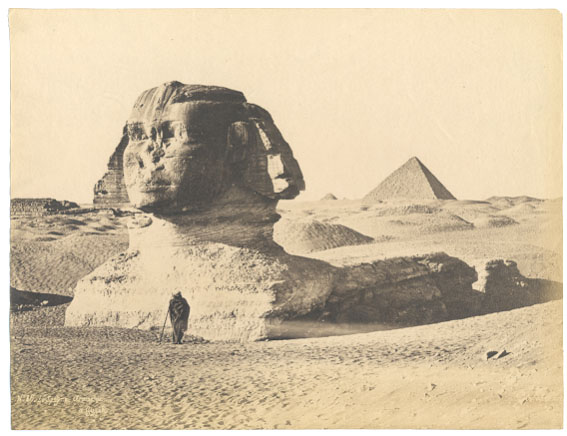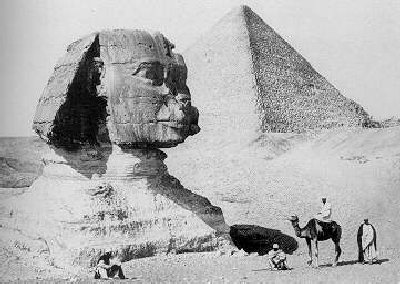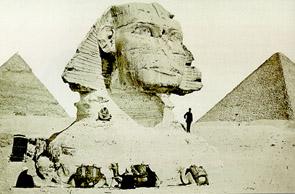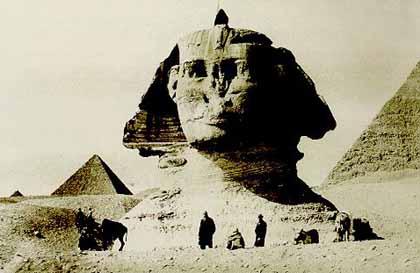The Egyptian Sphinx - Facts and information
The Sphinx is a statue with the body of a lion and head of human. The
great sphinx of Egypt was carved from a limestone on the Pyramids plateau in
Giza. It was not carved in the usual sense of the word, rather giant blocks of
soft limestone were quarried around the Great Sphinx to give its basic shape. It
looms 241 feet long and 65 feet high.
 |
 |
 |
 |
19th century photos of the sphinx
|
The traditional and majority view is that the Great Sphinx was built at the
same time as the nearby Pyramid of Khafre (Chephren) in about 2540 B.C.E. The
face of the Great Sphinx has been thought to be Khafre's, though recent evidence
casts doubt on this notion. There has been lively debate in recent years arguing
that it may be anywhere from two to four times that old.
Weathering patterns on the Sphinx that were consistent with water erosion
rather than erosion produced by wind and sand. These patterns were not found on
other structures on the plateau. Egypt is arid today, but about 10,000 years ago
the land was wet and rainy. West and Schock conclude the Sphinx must be on the
order of 7,000 to 10,000 years old in order to have the marks of water erosion
they found.
A theory was developed that the Sphinx, when considered with the neighboring
pyramids and ancient writings, is part of, and possibly the first element of, a
kind of astronomical map related to the constellation Orion. They have concluded
that the "best fit" for this map is found for the position of the
stars as they were in 10,500 B.C.E.
Finally, there are no inscriptions or writings that directly indicate the
builder or date of construction for the Sphinx. There are, in fact, some minor
references that the Sphinx existed prior to the pyramids.
The Sphinx has suffered the ravages of time, man and modern pollution. The
rearing cobra headpiece (uraeus) that sat on the king's forehead is lost, the
nose is damaged, and the beard now consists of only museum fragments. The Great
Sphinx has fallen to disrepair and been mostly covered by sand many times. A
massive and expensive restoration and preservation project has been underway
from 1950 to the present.
Back to Egypt History page
|